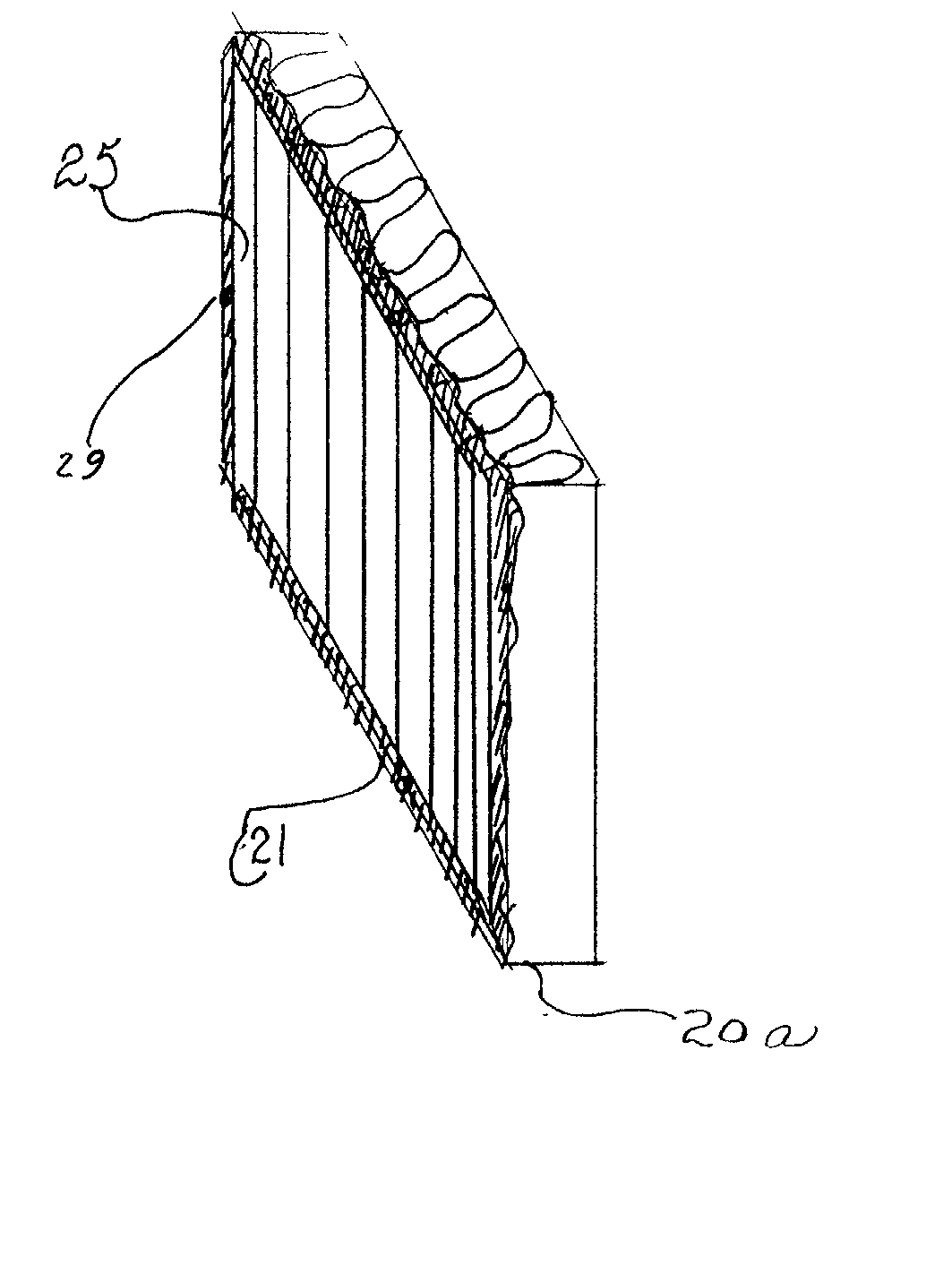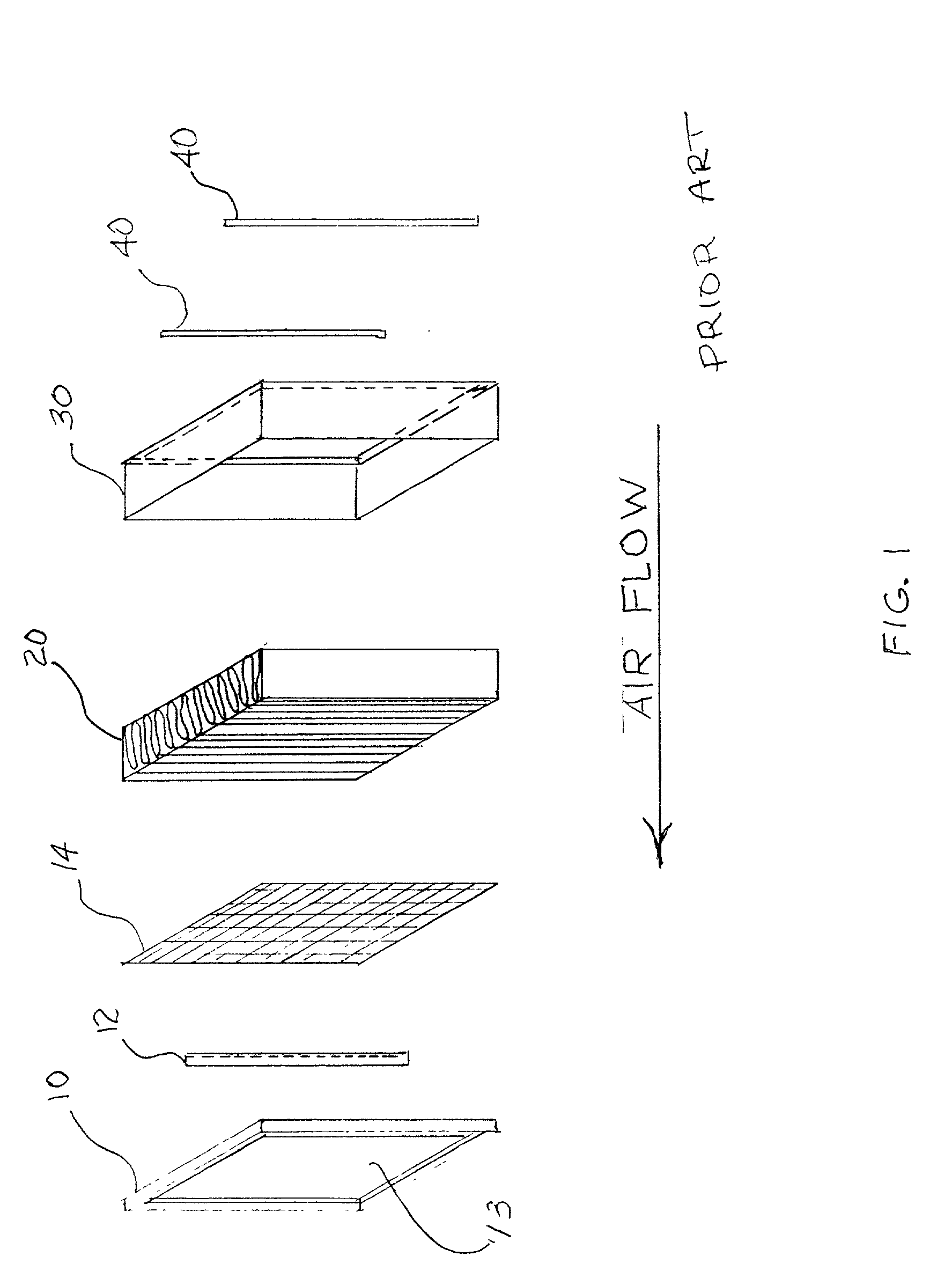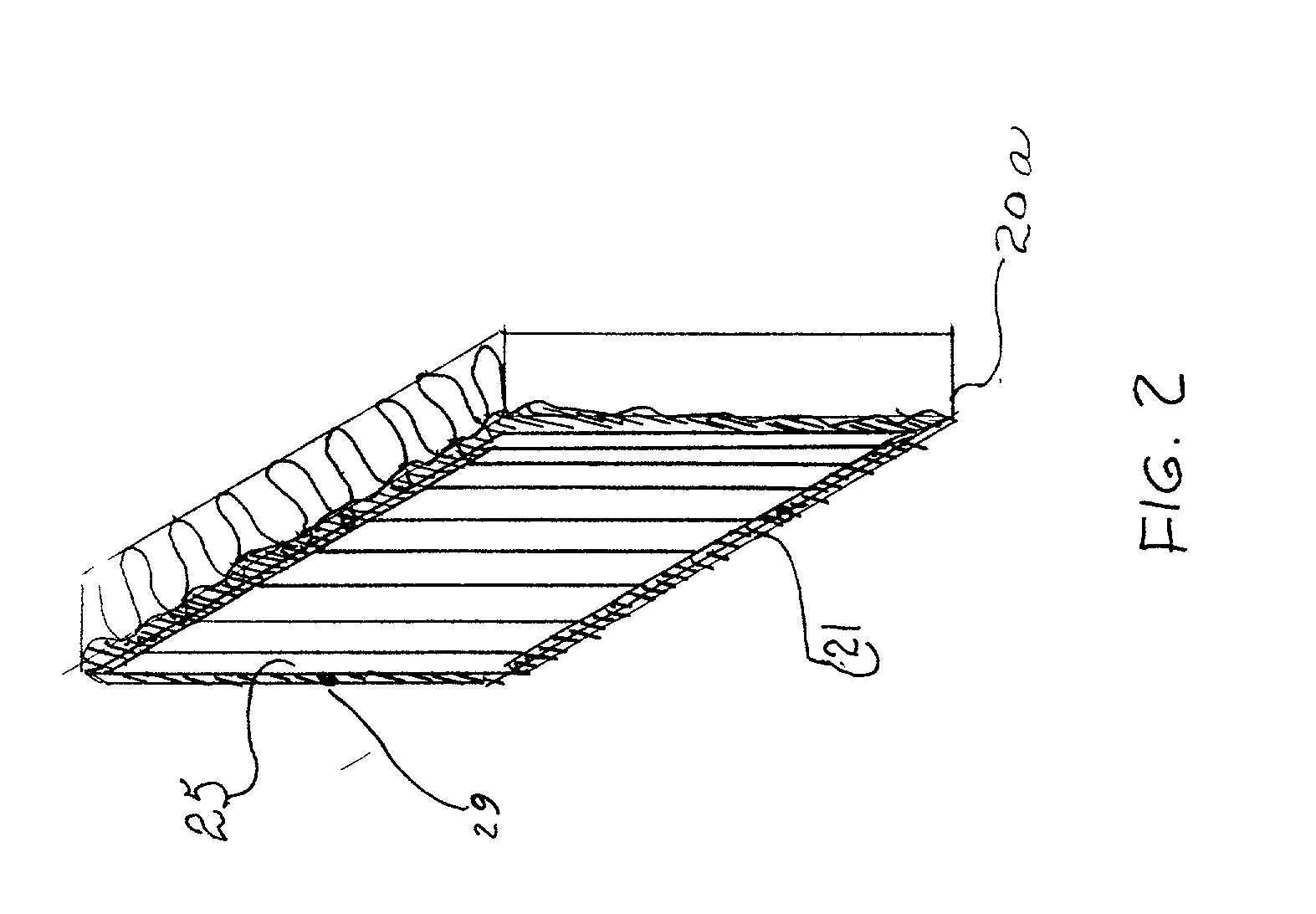Such engines are often used in harsh environments such as deserts, where extreme loads of particulate matter occur frequently and must be trapped by air filter elements within the air cleaner assembly.
Further complicating the operating conditions are rapidly shifting loads on the engine, causing pulsations on
mass flow of the intake air, subjecting the filter element to large flexions unless strongly supported.
In general, the air cleaner element must survive extreme conditions in an unattended state, hence the rugged construction This rugged construction comes at a price.
This element is intended to be disposable in nature, as most
field conditions do not allow for washing or otherwise maintaining a cleanable element.
Each time such a unit is replaced, a significant amount of undesirable metals forming the internal support structure and adhesives generally containing
chlorine and
plasticizer are placed in the landfill or more often in other areas of the world in the incinerator.
This environmental loading in more populous areas of the world, particularly in Europe, has led to pay-as-you-pollute regulation as well as punitive associated costs, necessitating significant disposal expense for the user of the present air cleaner
system.
Transportation of essential incoming operating supplies and the mandatory removal of wastes is exceptionally costly.
These internally disposed elements are generally of metals such as steel,
zinc, aluminum, and are definitely ecological undesirables upon disposal.
It is believed that such an arrangement for the assembly with the common closely spaced pleats associated with
combustion air for internal combustion engines would preclude use of this support arrangement, in addition there would be a degradation of favorable depth / length of section ratio.
Again this will not withstand
mass flow conditions of internal combustion engines utilizing wide dimensions.
The individual cross wires do support the media across the entire crest and root of the width but provide for relatively few pleats, therefore it is infeasible for the closely spaced pleats typical in internal combustion filter elements.
In addition, unless the wire were excessive in
diameter, or otherwise supported, long spans across the width would be easily deflected, allowing for excessive deflection in the pleated media element.
1. U.S. Pat. No. 6,045,597(Choi) which teaches a support / spacer is expected to be internally fixed and therefore expended with a disposable filter assembly. The spacer / support is taught to be made from
low elastic modulus material primarily of plastic and does not maximize
section modulus nor maximize depth / length ratios, however it is disposed in the width dimension of the filter.
2. U.S. Pat. No. 6,036,752(Reuter) teaches a support / spacer means expected to deform in a predictable manner.
It is again a
HVAC type filter with
system characteristics of steady air flow and low velocities, making it unsuitable for the oscillation of the
internal combustion engine airflows.
The glued pocket arrangement would probably be prone to fatigue and failure under the conditions characteristic of the
internal combustion engine intake.
Occasionally one sees a separate
gasket, however this is risky as sometimes it is lost, or misaligned, resulting in seal leakage.
This design lends itself to mis-alignment and improper sealing.
Face seals alone tend to have less than maximum sealing effectiveness, unless some method of
compression pressure control is inherant.
These newer seals tend to be less forgiving of overpressures, as significant plastic
creep, stress
cracking, or other failures result from
overpressure, and unsealed face areas or gaps result from under compression.
This method entails several machined parts, a spring, and a metal
stamping and would be relatively expensive to manufacture due to the number of parts required and probably difficult to use under outdoor
field conditions.
 Login to View More
Login to View More 


